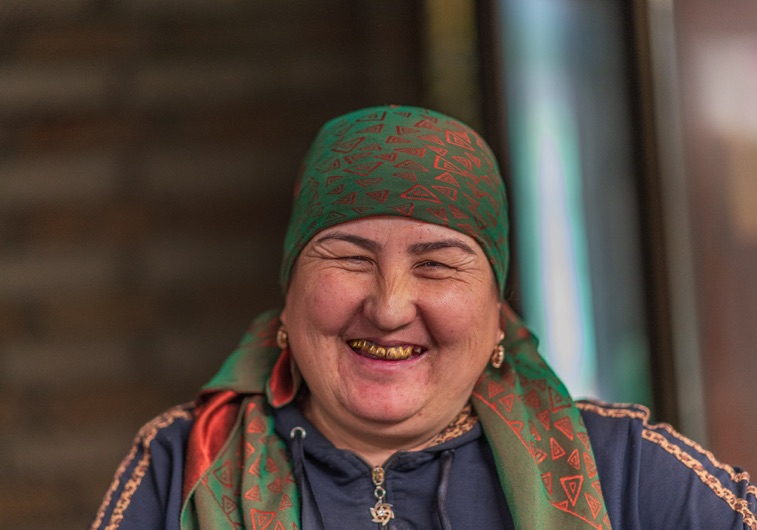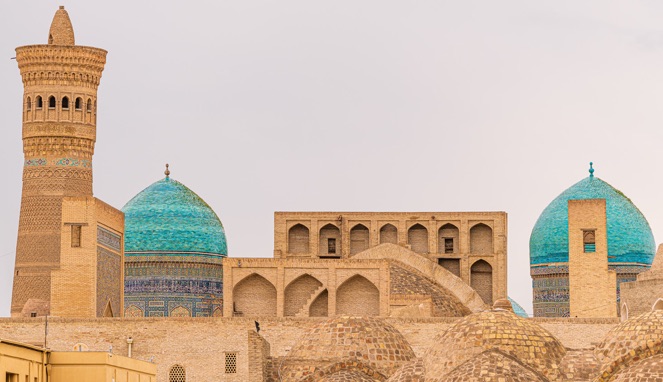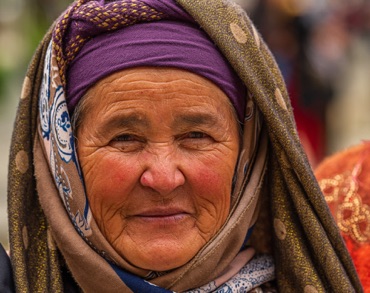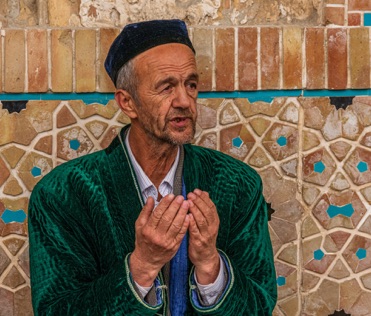April-May 2019 For well over two thousand years, the civilized anchors of the world were China in the East and, in the West, the evolving power centers of the Mediterranean and Middle East. A network of caravan routes—collectively known as the Silk Road— developed to connect these far-flung places Starting in the late 1980s, Madeleine and I travelled to the modern countries and their ancient sites on both ends of the Silk Road map, but we had not been to the areas of Central Asia in between. It was time to fill this gap. Reaching Ashgabat in Turkmenistan from Dubai, this hurrah took us some 2500 miles overland by 4x4, taxi, and train across deserts and steppes through Karakalpakstan and the rest of Uzbekistan to Almaty in Kazakhstan and on by air to Nur-Sultan map.
From the first millennium BCE at least, Central Asia was the geographic center of a global crossroads. The goods traffic passing through brought prosperity and power that surged back and forth across the vast landscape leaving an indelible mark on the ancient civilizations of Rome, Persia, Byzantium, and China. It also brought the attention and armies of Alexander and legions of horse-mounted nomads led by the likes of Genghis Khan and Tamerlane (Timur) whose savage attacks not only razed once splendid cities in the Central Asian valleys but also swept up artisans whom they tasked to create new cities.
The cities that rose to prominence may be less well known to many of us, but in their day, and in their own way, Khiva, Bukhara and Samarkand were as glorious as Florence or Sienna or Venice. Samarkand, in fact, was Timur’s attempt to out-Bukhara Bukhara. The impact of these cities, their rulers and the great nomadic armies, reached as far as Hungary and Russia, India, Persia, and China, and left a long lasting cultural legacy — and a long lasting paranoia. Meanwhile, for most of this history, Europe was a backwater — until Columbus. At that point wealth from the New World’s gold and other riches sloshed to Europe — and Europe became the main consumer of expensive luxuries from the east.
In the 19th century when the Raj reigned in India, Russia expanded its empire into these areas, which later became Soviet. The Russians built railways and great cities like Tashkent and Almaty and created environmental disasters of unparalleled scope. Then the Soviet Union collapsed and the Stans (stan is Persian for land) were on their own, with Russian culture, and many Russians, left behind. Autocratic leaders built bizarre and fantastic capital cities. We bookended our trip at Ashgabat and Astana (suddenly renamed Nur-Sultan earlier this year), both newly built with oil and gas money, a reminder that wealth is pouring back once again to Central Asia.
I hope these photographs will give you a taste of all this: the historical monuments, the people, the pleasant leafy Russian cities and the Soviet environmental disasters, and those indescribable, dystopian, new capital cities. As we passed through in early May, fields of poppies and wild tulips were blooming on the steppes and mountains. Carried along the Silk Roads to Istanbul, then Holland, the wild tulip species we saw became the forebears of all cultivated tulips.
Our adventure this year turned out to be the conceptual keystone that brought together all those previous wanderings of ours, from Venice to India’s Rajastan to Beijing. It led us to something of an epiphany, a better understanding of how the world we were born into came to be as crazy and wonderful, civilized and barbaric, intelligent and irrational, as it is.
Photojournals:
Links open in new tab. Times are GMT.
Carcass Island
Volunteer Point





